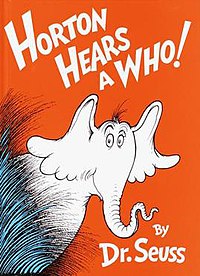We seem to be teaching in a time when the phrase "Whole Group" is almost akin to an ugly word (ranking close behind "worksheets"). The trend is to teach everything in small groups while saving whole class instruction for short mini-lessons. So, against my better judgement, I have tried for several weeks now to teach our reading curriculum as it was "meant" to be taught (according to the training I've received). I have spent very little time (20 or so minutes) each day in whole group instruction and pulled small groups to deliver the meat of the curriculum, i.e. the reading story and skill practice for the week. Yes, you read that correctly. I'm supposed to pull four groups a day and read the same story and practice the same skill with each group. But it gets better---I don't have to read the entire story with each small group, only the pages that relate to the skill. They can read the story during their independent work time.
So basically, what we have is a very similar lesson done four times a day in ability-level groups. Sure, the lesson is differentiated in the scaffolds I use, the leveled readers, and word study skills, but the
objectives are the same.
You may ask what the other kids are doing during this time? They are reading, writing, or working on a related task that goes with our skill or story for the week---all very valuable things for them to do, but they're doing them
alone. For a long time.
I'm not against small groups as a differentiation method for some students who need to be retaught or shown in a different way, but for EVERYONE? To deliver CORE program content? The scenario above is not only inefficient, it is unnecessary. And according to my students' test scores during said trial, it is not working. Not in my classroom anyway.
In my mind it makes much more sense to teach the core content in a whole group setting, then differentiate instruction only for the students who need it. Those needy kids get it at least twice that way!
I think balance is the key. Interactive, engaging whole group instruction is not bad...It's even beneficial!
When it comes right down to it, I'm not going to spend 80 minutes a day in small group instruction delivering similar content just so I can say they were taught in a small group. I'm going to read our basal story with the
entire class, because I think it is important that we share it together as a community and bounce ideas together. And finally, I'll pull small groups on an as-needed basis.
In short, I'll go back to what I was doing before my experiment!
 In today's lesson, I wanted to lower the scaffold even more, so I read Thidwick the Big-Hearted Moose to the class, then had the students create these awesome foldables. The task was to listen during the story and identify examples of when the author was informing, persuading, entertaining, and expressing ideas. They jotted down those examples on their 4-square papers from this lesson, then after the story, they wrote their items under each flap of the foldable. The top flap was where they were supposed to write what they thought the author's main message was. Here are a few of the examples from today:
In today's lesson, I wanted to lower the scaffold even more, so I read Thidwick the Big-Hearted Moose to the class, then had the students create these awesome foldables. The task was to listen during the story and identify examples of when the author was informing, persuading, entertaining, and expressing ideas. They jotted down those examples on their 4-square papers from this lesson, then after the story, they wrote their items under each flap of the foldable. The top flap was where they were supposed to write what they thought the author's main message was. Here are a few of the examples from today:

























